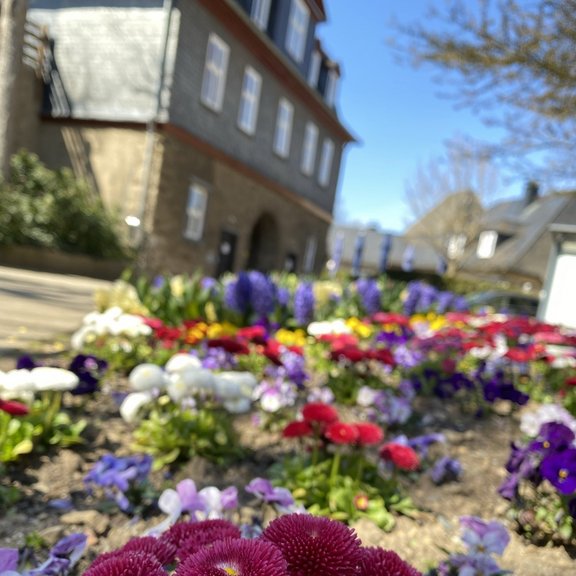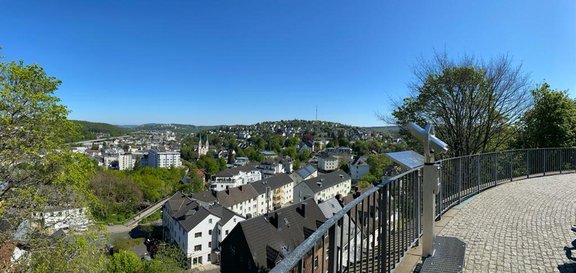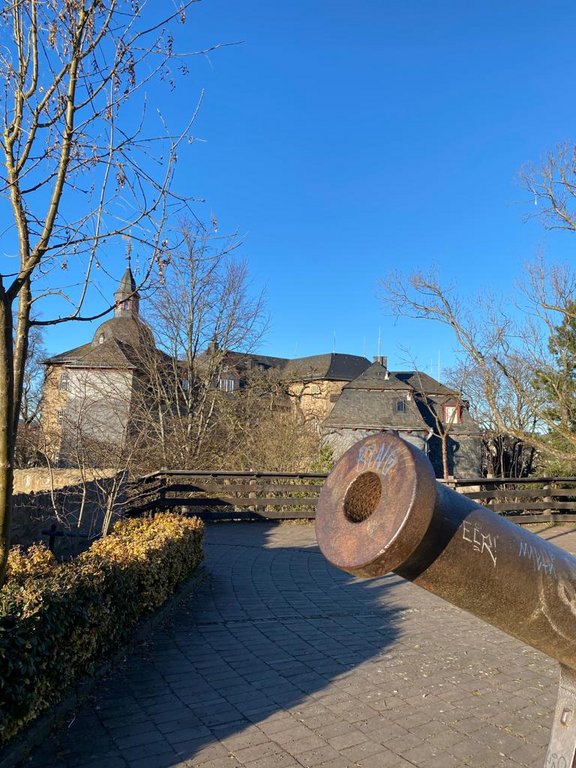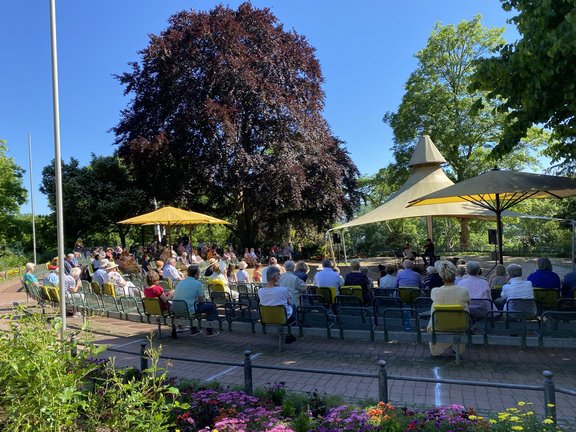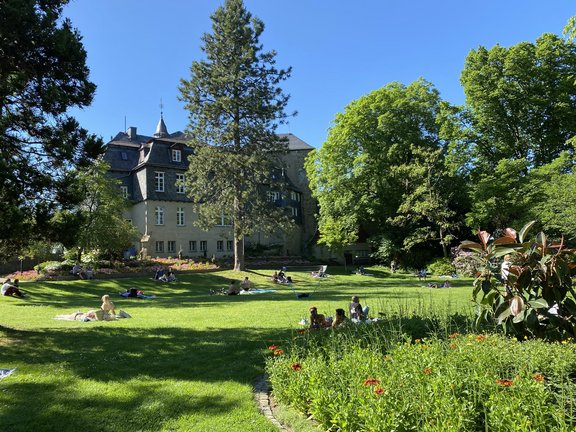magaSIn
5 reasons to visit the Siegener Schlosspark
What lies behind Siegen’s 700-year-old city walls? A lot of history that is likely to surprise not just visitors but also many residents of the town, which is nicknamed Krönchenstadt after the golden coronet at the top of the tower of the Nikolaikirche. The colourful garden around the Oberes Schloss certainly has some stories to tell.
Kleiner Krebs and Großer Krebs
What a view! In times past, guards kept watch for enemies from the massive battery towers known as the Kleiner Krebs and Großer Krebs. In the event of an attack, Siegen was ready to defend itself with the large guns and cannons at its disposal. The relatively small settlement that could be seen from the top of the Siegberg hill at that time has now grown into a vibrant university town. But one thing that hasn’t changed is the unique view from these two lookout towers to the town and its surroundings.
Dungeon and Armesünderpforte
Anyone coming into conflict with the law in Siegen in the late Middle Ages did not have much to laugh about. Prisoners were held in two round towers within the castle walls, known as the Hexenturm and the Sackturm. They suffered hunger, cold and darkness until the day of their punishment – usually execution. Both towers, and the Armesünderpforte the prisoners had to pass through on their way to their execution on the Giersberg, have survived to the present day.
What were the cannons aiming at?
Whereas the Catholic line of the Nassau-Siegen dynasty resided in the Oberes Schloss, the Protestant line of the family lived in the Unteres Schloss. To demonstrate their power, the Lords of the Oberes Schloss pointed their cannons at the Unteres Schloss, a testament to Siegen’s denominational divisions in the 18th century, which reached a climax in 1735, when Catholic residents of the Oberes Schloss allowed a “peasants’ army” from Cologne to pass through the Marburger Tor, which was part of the town’s fortifications, into the town, to stir up hatred against the Protestant residents. Fortunately, the attack could be repelled.
Herb and kitchen garden
Siegen is a colourful place, especially in spring when more than 60,000 tulips, crocuses, pansies and violets start to sprout in the castle garden. Since 2013 an old tradition has also been flourishing again with the reintroduction of a herb garden, established as far back as the 16th century by Gräfin Juliana von Stolberg-Wernigerode to produce elixirs and remedies. As they walk through the terraced beds, visitors will find more than 50 types of herb and medicinal plants, some of them ancient.
The place to be in Siegen
Mature trees provide shade, and brightly coloured flower beds delight young and old alike. When the weather is fine, Siegen’s residents gather in the beautiful castle garden, for a family walk, a picnic, or simply to switch off and relax. Children play, students enjoy the natural surroundings, and music, theatre and cinema fans gather around the music pavilion.
